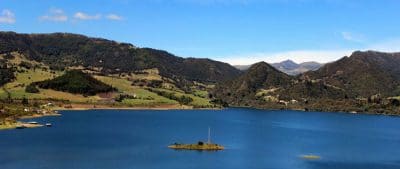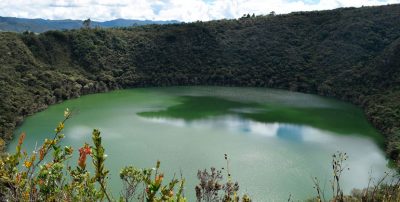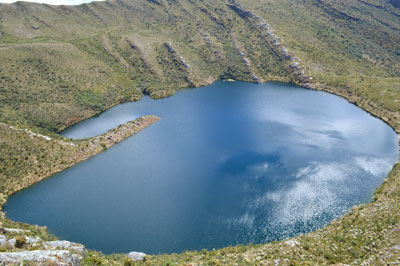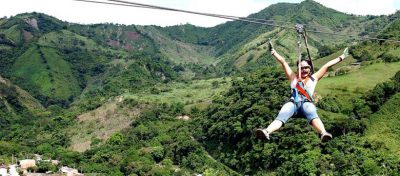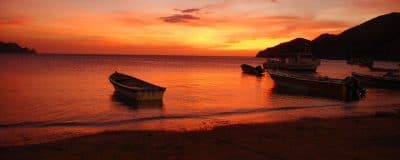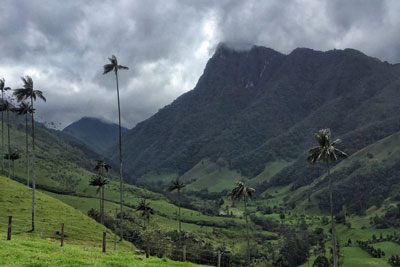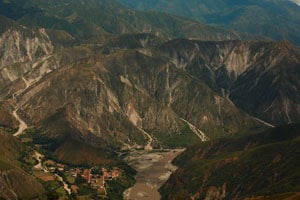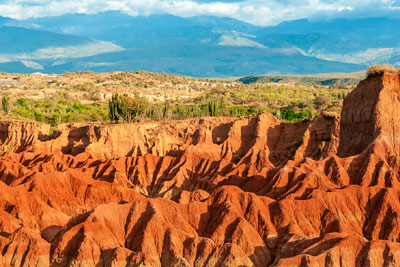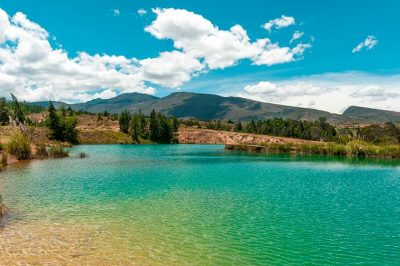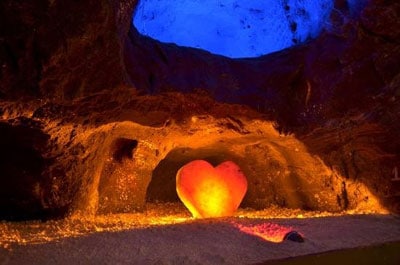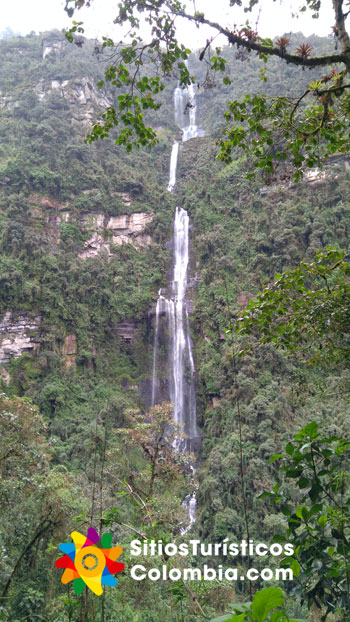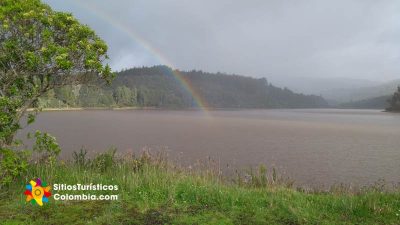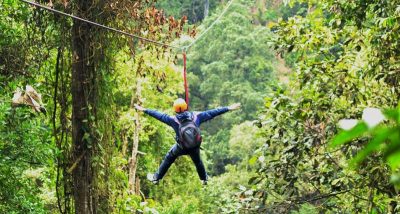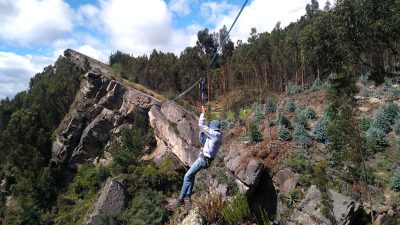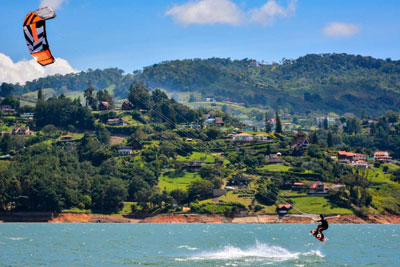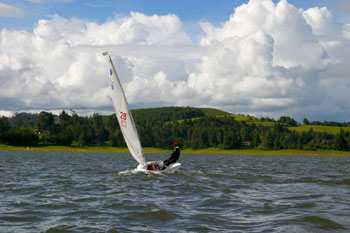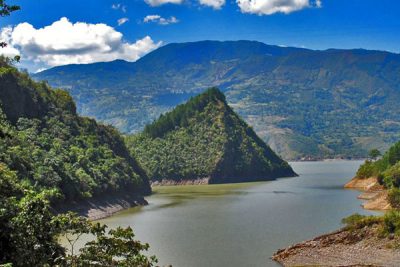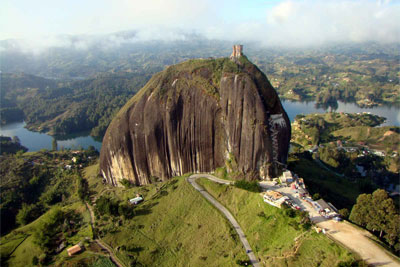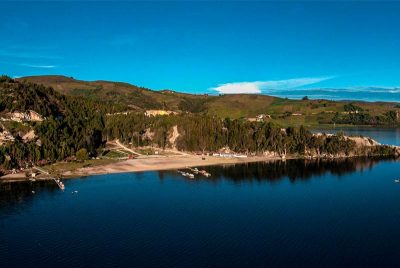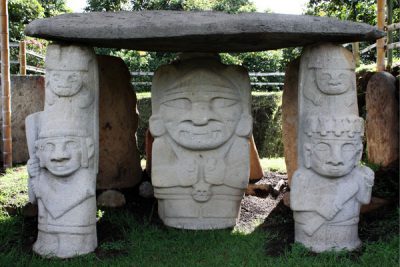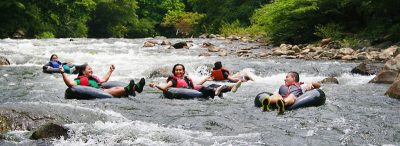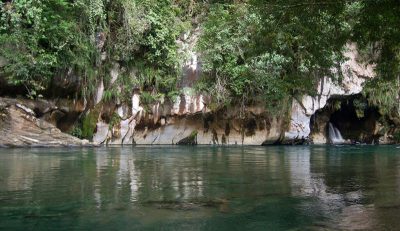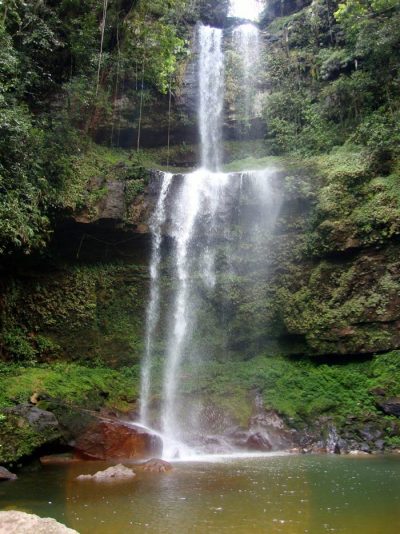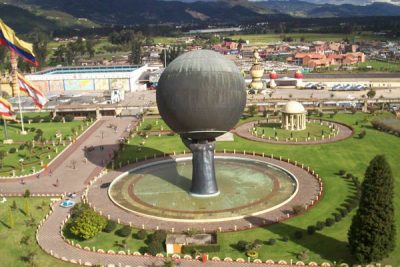Welcome to Colombia Tourist Attractions, meet and love Colombia!
Welcome to Colombiatouristattractions.com! This is a website where you find information about the diversity of tourist attractions in Colombia. Here you can access detailed data on routes, how to get there, attractions, things to do, hotels and restaurants in the places you want to visit in this beautiful country. Colombia has beaches, badlands, jungles and snowy mountains, its variety of altitudes allows tourists to have different experiences, so we help you choose your next tourist destination to visit in Colombia.
Neusa Reservoir
The Neusa reservoir is a great source of water supply for Cundinamarca, it supplies the Cogua and Zipaquirá aqueducts; besides supplying, other important functions are flood control and flow regulation in the Neusa river basin during dry seasons. The construction of this reservoir began in 1948, and was carried out by [...]
Guatavita Lagoon
Guatavita Lagoon, in addition to its wonderful tourist charm, hides a fascinating history, a legend that characterizes it and makes it more attractive to visitors. La Leyenda del Dorado (Dorado Legend) tells that long ago, before the Spanish conquest, the Muiscas, the indigenous tribe belonging to this region, offered the [...]
Chingaza National Natural Park
HISTORY OF CHINGAZA NATIONAL NATURAL PARK Chingaza National Natural Park has 50,374 hectares that were part of the lands of the Muiscas and Chibchas indigenous communities of Colombia. These communities, despite their beliefs, sanctified the waters of their lakes and mountains, these sites were places of devotion, which they respected [...]
Tobia, Cundinamarca
Tobia was founded in 1939 on June 29th,on Saint Peter's Day. This town, in its beginnings, was a camp designed for the black people who worked in the construction of the railway that went to the Atlantic coast and needed a place to spend the nights. The town is named [...]
Taganga, Santa Marta
HOW TO GET TO TAGANGA? Taganga is a place located 15 minutes north of Santa Marta, in the Caribbean region of Colombia. To get to Taganga from Santa Marta airport you can take a bus with direct destination to Taganga, the cost of the bus does not exceed $2,000. Buses [...]
Valle del Cocora
HISTORY OF THE VALLE DEL COCORA Valle del Cocora is named after Princess Quimbaya, whose name means water star. The Quimbayas Indians were a tribe that was characterized by the realization of very beautiful and high quality gold pieces. They were located all over the coffee axis and had [...]
Chicamocha Canyon Park
HISTORY OF CHICAMOCHA CANYON The Chicamocha Canyon is located in the 77th position of the Wonders of the World, is an erosion caused on the river bed and by tectonic movements of the earth. It is located in the department of Santander and Boyacá, because although most of its route [...]
Tatacoa Desert
The Tatacoa Desert, as this region located in Huila is famously known, is not exactly a desert, it is rather a tropical dry forest that in the tertiary period was a garden full of trees and flowers that gradually dried up until it became what today appears to be an [...]
Villa de Leyva
Villa de Leyva is a town located in the department of Boyacá, the town was declared a National Monument in 1954 during the government of President Rojas Pinilla. It is a town where you can breathe a colonial air, its streets and houses still preserve this type of architecture. It [...]
Nemocon Salt Mine
HISTORY OF NEMOCON SALT MINE The Nemocón Salt Mine is a tourist attraction in Cundinamarca with more than 500 years of history, an underground site of cultural, historical, architectural and scientific interest. The municipality itself, Nemocón, has interesting stories in its heritage, for it was in the fields of Nemocón [...]
La Chorrera Park, Choachi
This park was created in 2007 by peasant families living around the La Chorrera waterfalls. These families decided to buy the land that today covers the park and build the infrastructure so that visitors could tour the place. In this way, through the creation of the park, jobs were created [...]
La Regadera Reservoir
In 1938 the construction of the La Regadera reservoir in Usme was completed. La Regadera is a water reserve that receives the rivers Chisacá, Lechoso and Curubital. The surroundings of the reservoir are full of beautiful wooded areas, decorated with different species of vegetation, this area is classified as high [...]
Chicaque Park
HOW TO GET TO CHICAQUE PARK? Parque Chicaque is an ecological reserve located southwest of Bogotá, in the municipality of San Antonio de Tequendama, ideal for tourism in Cundinamarca. On weekends the park offers transportation to the entrance of the park, the buses leave from Soacha, so you should arrive [...]
Rocks of Sutatausa
The name Sutatausa refers to the two indigenous tribes that inhabited these areas at the time of the conquest: the Suta and the Tausa. These lands tell the story of the hundreds of Indians who, after opposing new beliefs and the miserable treatment given to them by the Spaniards, rebelled [...]
Calima Lake
The construction of the Calima reservoir was completed in 1966. The reservoir, which is 13 kilometers long and 1.5 kilometers wide, was mainly built for the production of electric energy but, over time, it has become a coveted tourist destination for travelers visiting Valle del Cauca. The area covered by [...]
Sisga Reservoir, Choconta
The Sisga Reservoir is located in the municipality of Chocontá (Cundinamarca). This dam was built mainly to prevent the Sisga River from overflowing and flooding the city of Bogotá. The lake above the dam is what is known as the Sisga Reservoir, which has become known for its tourist importance [...]
Chivor Reservoir “La Esmeralda”
Chivor reservoir is a hydroelectric power plant created in the department of Boyacá. Chivor is a word that comes from the language of the Chibcha indigenous tribe and means "green and rich land". It took almost 30 years to build and covers the municipalities of Almeida, Macanal and Chivor. HOW [...]
Guatape, Piedra el Peñol
Peñol is made up of two tourist wonders: the Reservoir and La Piedra del Peñol. In order to build the reservoir, the urban area of El Peñol and some houses in Guatapé had to be destroyed. La Piedra del Peñol has 740 steps, and the first time they decided to [...]
Tota Lake
Tota Lake has become one of the most frequented tourist sites by travelers thanks to the beauty of its landscapes and the stories that are hidden in its lands, since this land was once inhabited by the indigenous people of the Muisca tribe, who considered it the "mirror of the [...]
San Agustin Archaeological Park
San Agustin Archaeological Park has been declared a world heritage site by UNESCO. It is located in the department of Huila and is one of Colombia's archaeological treasures. This area of the country, according to historians, was a sacred site for the indigenous communities, and it is also said that [...]
Palomino, Guajira
Palomino is one of the most charming beaches in Colombia, is located in the municipality of Dibulla in Guajira and is a destination preferred by foreigners because so far tourism is booming in this area, so the beach is not very full and you can take time to rest and [...]
Rio Claro Canyon Reserve
The Rio Claro Canyon Reserve was created to preserve the species of fauna and flora in the approximately 500 hectares of tropical rainforest it covers. In addition, the reserve has promoted respect for nature and the duty we humans have to take care of it so that spaces like these [...]
Fin del Mundo Natural Reserve
Fin del Mundo natural reserve is one of the most magical places on Colombian territory, is a wonderful natural experience and a destination much visited by nationals and foreigners who seek to clean their lungs from city pollution. Don't get carried away by its frightening name, because although this part [...]
Jaime Duque Park
The Jaime Duque Park was founded in 1983 as a nice initiative to help non-profit foundations working for the elderly and children. This park was created by the aviator and first chief pilot of Avianca, Jaime Duque Grisales, who dedicated his life to social work, donations and helping the neediest [...]
According to data from the Colombian Association of Travel and Tourism (Anato), in Colombia there has been a constant tendency to increase the arrival of foreigners to our territory. While in 2007 the arrival of 1,195,000 foreigners was recorded, in 2016 this figure was 2,698,000, representing a growth of 126%, however, an even more notable positive increase was yet to come.
For 2017, thanks to political processes, advances in infrastructure and economic strength, international confidence was improved and the risk index in our country was reduced, which improved our image and led to a drastic increase in the visitor rate from abroad According to data from the Tourist Information Center of Colombia, based on DANE, during 2017 6.5 million foreigners entered Colombia, representing an increase of 28% compared to 2016 and more than 400% in Comparison with 2006, strong evidence of tourism growth and development as a product of the positive vision that the country manages. However, although tourism makes a considerable contribution to our economy in the commerce, gastronomy, hotel and transportation sectors, this contribution does not represent more than 5% of the national Gross Domestic Product (GDP). So, how many more located foreigners visit Colombia so that the tourism sector becomes the main provider of the country’s GDP?
Bogotá, Cali, Antioquia, Valle del Cauca, Bolívar, San Andrés, Santa Marta and Cartagena, the cities with the highest number of foreigners. The citizens of the United States were the ones who obtained our country most motivated by the search for unique landscapes, gastronomic variety, flora and fauna and the friendliness of the average Colombian. In addition, other countries that also contributed tourists were Brazil, France, Germany, Canada, Italy, the Netherlands and Australia, among many other visitors for whom Spanish was a foreign language.
Colombia is a country rich in culture with immense plurality of ethnicities, customs, musical rhythms, food and communities, each with its own linguistic diversity. The geographical conditions, the crops and the gastronomic offer produced by the different thermal floors make Colombia a country recognized worldwide for its privileged location with enviable tourism potential. However, due to the recent decades marked by the internal armed conflict, our country has been stigmatized and recognized abroad as a violent country and not recommended to visit by tourists from other parts of the world.
Fortunately, violence has been greatly reduced after the political processes that have led to demobilization and cessation of hostilities by some of the members who have been part of the conflict. The Peace Agreements agreed with the guerrilla of the Revolutionary Armed Forces of Colombia (FARC) in 2017 during the mandate of former President Juan Manuel Santos, have given us a positive impact as a society and progressively the perception that the people of the foreigners have about our country and our society, which in turn has been reflected in the opening of new opportunities directly related to tourism and the arrival of foreigners in our territory.
Such is the positive development that the Colombian State intends to make the tourism sector the main supplier of the country’s gross domestic product. The government of the current president Iván Duque (2019) that in his government plan has decided to implement a policy based on the Orange Economy, opens a new page of history for Colombians where art, culture and, especially, tourism , become an economic sector of great importance.
Colombia is a country that has 6 regions in which the Amazon region, the Andean region, the Caribbean region, the Insular region, the Orinoquía region and the Pacific region are located, in turn, these regions are divided into 32 departments each one with a geographical variety and a cultural diversity of its own. Simply move a few kilometers to any direction to find yourself in a new environment where the weather, customs and their inhabitants will be different compared to the starting point.
Colombia is considered one of the richest countries in linguistic diversity. Here, cultural plurality offers linguistic varieties where expressions, accents and lexicals manifest themselves in different ways, and in our country there are not only multiple changes in Spanish but there are also indigenous languages and native communities that have their own linguistic characteristics The level of linguistic differences throughout the national territory is such that even a Colombian native from Bogotá while visiting, for example, in Santa Marta may encounter language barriers and misinterpretations in the meanings given the accent, lexicon and level of informality of the Spanish language used in the northern part of Colombia.
In our country there are 68 native languages that, according to the last DANE census (2005), are spoken by approximately 850,000 people. However, in the country more than one hundred languages have died in recent years and 12 languages are in danger of extinction (UNESCO, 2012) because native speakers are less and less.

